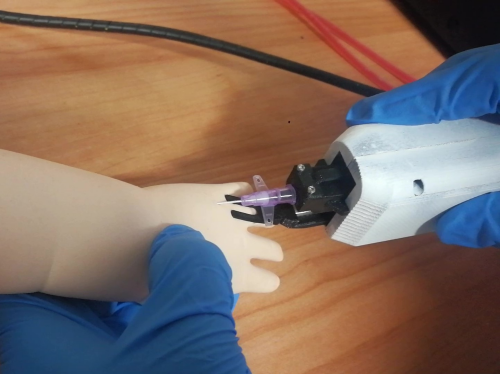Smart sensors and mechatronic devices can largely impact healthcare by facilitating difficult operations and providing relevant information for medical diagnosis and treatment. There’s indeed an infinite number of areas where smart technology can contribute to better health monitoring and care. At the Biomedical Robotics Laboratory we are developing smart medical devices for two very important applications: Intravenous catheterization and cancer tissue identification.

Peripheral intravenous catheterization (PIVC) is a medical procedure performed to create access to the venous system of patients. It is frequently required in hospitals, with over one billion operations performed each year in the USA alone. However, the operation is very difficult and characterized by very low success rates, especially for pediatrics or special patients. On average, only 53% of PIVCs on pediatric patients are successful on the first attempt, and about 10% of them require more than 4 attempts. Multiple needle insertions are painful and can lead to serious injuries and complications. On the other hand, successful PIVC requires advanced techniques and medical expertise that normally takes years to acquire. Our technologies eliminate these problems by allowing even non-experts to successfully perform PIVCs on challenging patients (like newborns).

Intraoperative cancer tissue identification is extremely important to help surgeons completely eradicate tumors with minimal damage to healthy tissue. For example, high precision is required during surgical treatment of throat cancer to preserve as much as possible vital functionalities such as breathing, deglutition and vocalization. Nevertheless, the precision of the vast majority of cancer operations performed today depends completely on the experience and judgment of the operating surgeon. He/she is required to define during the operation the borders of the tumor and decide how much tissue to excise from the patient. Our research at the Biomedical Robotics Laboratory aims to improve this situation by increasing the objectivity of surgical such decisions. We are doing this by developing real-time cancer detection technologies, such as the Smart-Probe system. These technologies are expected to allow significant improvements in surgical precision while maximizing the preservation of healthy tissue.